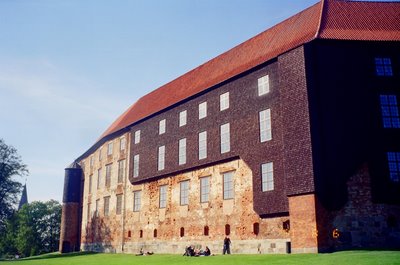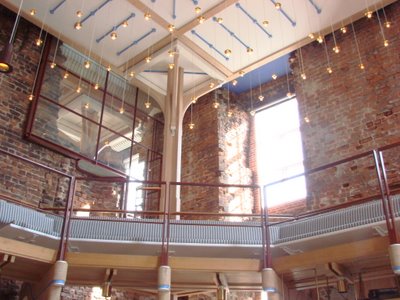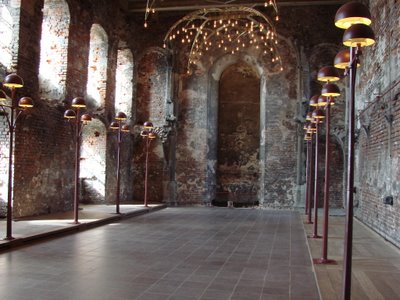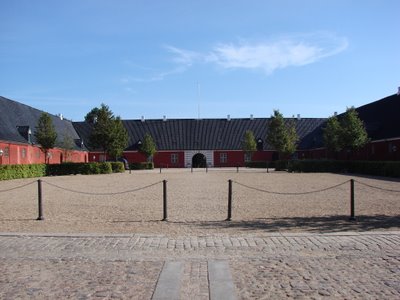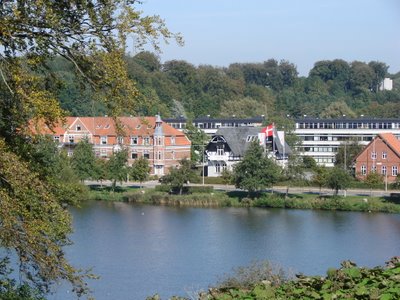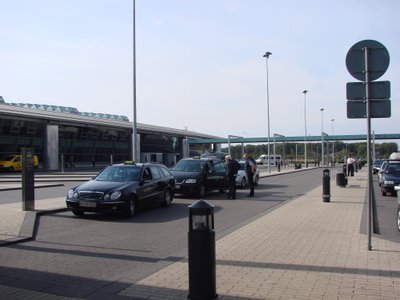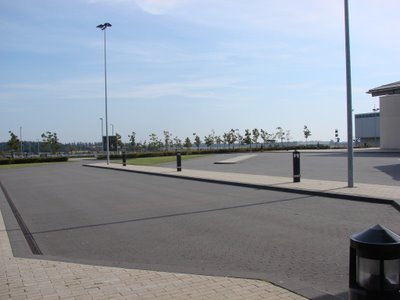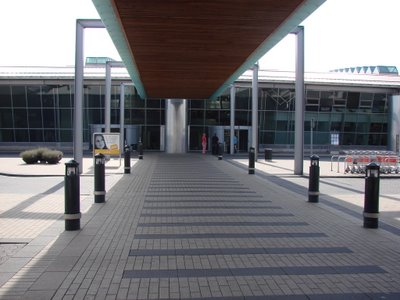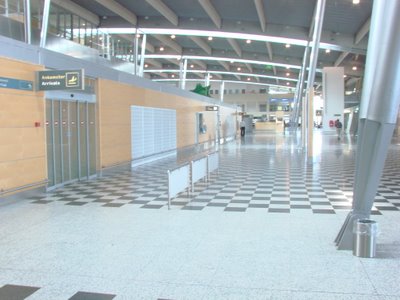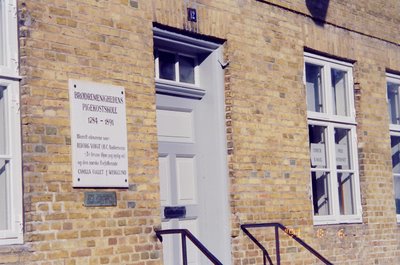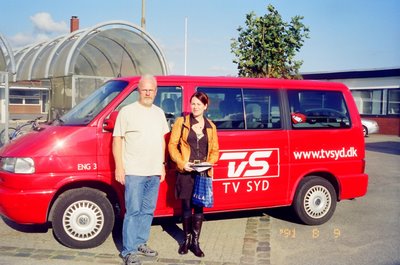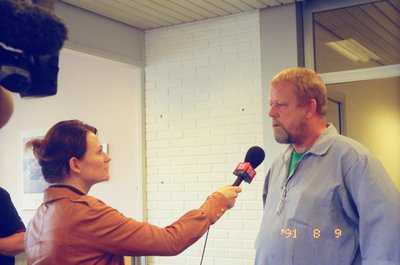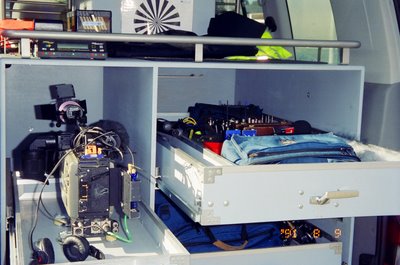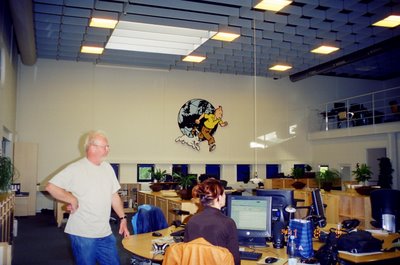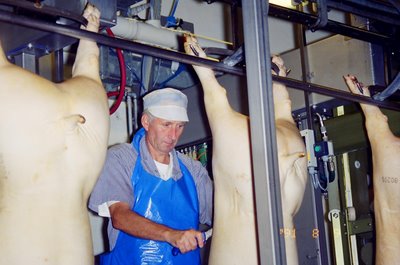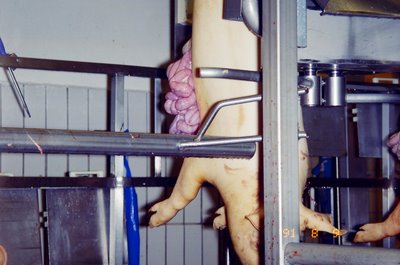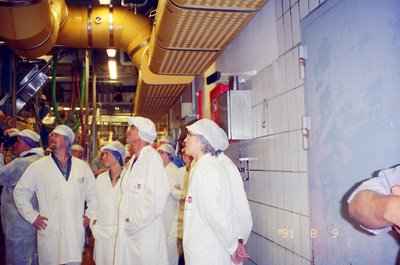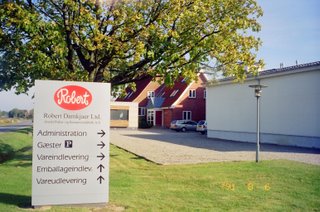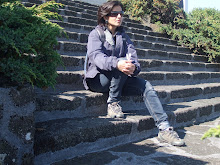Husband and wife pair of Sudhir and Aruna were running a successful spice manufacturing unit in Perungudi called TilSpices Pvt. Ltd. (Til for Trust in the Lord). They had entered into an agreement with the owner of the property, a man called Venkatraman who got the power of attorney from his father who is in coma. The agreement signed by him in 2004 says that he will sell the property to them for 60 lakh rupees. However at the time of registration he backed out, given that land prices were going through the roof along the IT corridor.
 Construction activity is on everywhere, with buildings coming up on both sides of this demolished factory. The agreement for this 6 ground property was 10 lakh rupees per ground. But at the time of registration, Venkatraman never showed up.
Construction activity is on everywhere, with buildings coming up on both sides of this demolished factory. The agreement for this 6 ground property was 10 lakh rupees per ground. But at the time of registration, Venkatraman never showed up.  Aruna and Sudhir have suffered damages of nearly 3 crore rupees. Venkatraman and his bunch of hired henchmen have given stolen and destroyed their property. Aruna says, "Venkatraman also has two children like me. He's raising two more monsters for this world."
Aruna and Sudhir have suffered damages of nearly 3 crore rupees. Venkatraman and his bunch of hired henchmen have given stolen and destroyed their property. Aruna says, "Venkatraman also has two children like me. He's raising two more monsters for this world."
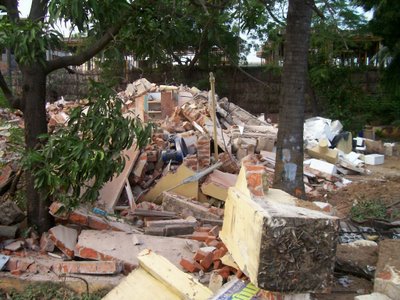 At the site, there are a whole bunch of shady looking characters hanging around. The place is being fenced off and I'm certain construction will begin soon. Aruna's equpment has been stolen and damaged but the police are telling her to get out of there. The Assistant Commissioner from the J1 police station said she had no business there. The goons are even trying to sell the media photographs of her "stealing" Venkatraman's property.
At the site, there are a whole bunch of shady looking characters hanging around. The place is being fenced off and I'm certain construction will begin soon. Aruna's equpment has been stolen and damaged but the police are telling her to get out of there. The Assistant Commissioner from the J1 police station said she had no business there. The goons are even trying to sell the media photographs of her "stealing" Venkatraman's property. But he didn’t re-negotiate with Aruna and that forced her to go to court to make him keep his end of the bargain. Venkatraman of course just ignored the court summons.
Now, Aruna says, the factory has been demolished at his behest to get her out of there by hook or by crook. A local land-broker, called Kodandaraman (with some heavy duty connections that include High Court judges) was hired for the job and in three hours 100 men with bulldozers smashed Venkatraman’s factory and Aruna’s business. Venkatraman can now get much, much more for the property with Aruna out of the way.
This brazen illegal act has the blessings of the police. A senior police officer told Aruna that his hands were tied because somebody above him had been bribed. The officer admitted to her that it was a rape of justice and that he was truly ashamed. But alas, honest men can do nothing.
This story has sickened me because the rot of corruption has such deep roots. Not that I didn’t know it, but it sickens me because perfectly decent, honest people are attacked in this manner and their livelihood is destroyed.
The people who should protect us are the ones we need protection from – the police. This entire episode has left Aruna and Sudhir shocked because everywhere they turn they find people have been bought up. Aruna says, “I am strong and I believe in God, so I am able to take this shock. But what if someone had ended their lives because of this?”
The police and Venkatraman would’ve heaved a sigh of relief. That’s how soulless this tribe is. But its got to come back to haunt them and I hope they suffer the consequences of their dirty greed.
